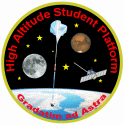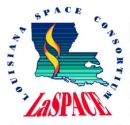



Payload 11 Information
Payload Flight Number:
Institution:
Payload Title:
DIE HARD (Demonstrating Intensity of Electromagnetic High Altitude Radiation Determination)
Student Leader:
Faculty Advisor:
Payload class:
Large
Payload ID Number:
11
Mass:
<20 kg
Current:
1.82 A @ 30V
Serial Downlink:
4800 baud
Analog Downlink:
No
Serial Commands:
Yes
Discrete Commands:
No
Payload Specification & Integration Plan
Due:
Delivered:
Payload Integration Certification
Scheduled:
Actual:
Flight Operation Plan
Due:
Delivered:
Final Flight / Science Report
Due:
Delivered:
Abstract:
The University of Colorado at Boulder student HASP team will determine the viability of high altitude observatories by diurnal imaging of celestial bodies, measuring and recording light intensity in the stratosphere as a function of altitude, and by nocturnal imaging of celestial bodies to determine atmospheric turbulence and light intensity due to residuals in the atmosphere. This will be achieved by mounting four photometers at 45 degrees from the horizon. During ascent and descent these photometers will record data for broadband viewing while at night, an astronomical filter wheel will record data for five different wavelengths of light. Two CCD cameras will record video during the flight. One large angle field of view (FOV) CCD will find points of reference in the night sky while the other smaller FOV CCD will make more detailed observations. Additionally, accelerometers and gyroscopes will record the vibration and stability of the observation platform. This student lead team will continue to work with scientific advisors from Dartmouth College and the Southwest Research Institute to build upon flight experience from All 2007 student flight. The DIE HARD team will require little C&DH control from HASP, little power, and will meet the structural envelope and requirements of the HASP Interface Manual.
Monthly Briefings:
|